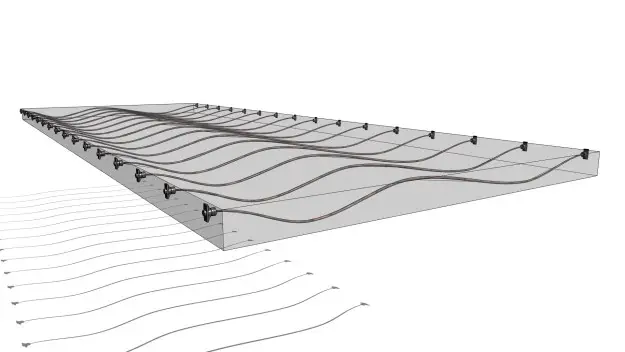Post Tension Slab
Although concrete is a strong material for construction, it is not resistant to breakdown especially where longer concrete slabs are required like in a bridge or a length of a beam. For this, the concrete slab is tensioned with a process called pre-stressing and the slab of concrete which comes out after this process is known as post tension slab. This slab is much stronger as well as more durable than the normal concrete slabs. In today’s world, where the modern engineering is finding new ways to build longer, more efficient and stronger structures, post tension slab becomes one of their chief requirements. There are many advantages and disadvantages of post tensioned slabs which we will discuss in this post.


Advantages of Post Tension Slab
Post tension slabs are advantageous in many ways. Some of the major benefits of post tension slabs are as follows.
- Reduced cost: Post tension slabs are excellent ways to construct stronger structures at an affordable price. There are many structures like parking garages as well as stadiums, since they are required to hold much more weight than average buildings, this slab becomes a viable option.
- Flexibility in design: The designs made with this slab are sleek, require lesser space and give way to dynamic contours. All this makes them ideal for the expression of creativity in the building design.
- Lesser usage of materials: Since the post tension slab is thin, the materials used with it are also lesser. Be it the thin beams, walls or supporting pillars of buildings, this compact concrete slab does not need bulky materials.
- Durability: Being a very strong substitute of the normal concrete, it lasts longer.
Disadvantages of the post tension slab
Here are a few disadvantages of post tension slabs:
- Since there are a number of tendons and wires spread inside the post tension slab, it can result in corrosion. But largely, this tendency to corrode depends on the quality of the material used.
- Complexity of work: The post tension slab can be made only by skillful professionals. The local workers may not have the necessary skills required to prepare this complex slab.
- Poor workmanship can lead to accidents: The main problem with using post tension slab is that if care is not taken while making it, it can lead to future mishaps. Many a times, ignorant workers do not fill the gaps of the tendons and wiring completely. These gaps cause corrosion of the wires which may break untimely, leading to some untoward events.
The post tension slab is one of the building blocks of the modern architecture and builders cannot think of making skyscrapers, longer bridges and marvelous structures without using it. A skilled and experienced work is one of the key requirements while making these slabs, on the other hand, carelessness in the manufacture process may lead to disastrous results.

The BIGGEST negative for a post tensioned slab under a residence is that this type of slab cannot be used to support any changes or remodels (such as removing/changing load bearing walls and adding windows/doors or moving shear walls). In other words, when a home buyer has a post tensioned slab, they better like the house in the original configuration because they are NOT going to touch the slab.
When the plumbing goes out under the post tensioned slab, then the plumbing pipes must go into the walls/ceilings since the slab cannot be disturbed.
The desire to remodel/upgrade/change a residence is rather common, but it cannot be applied to a post tensioned slab.
be used to remodel or reconfigure a residence and additions are much more difficult to accomplish.